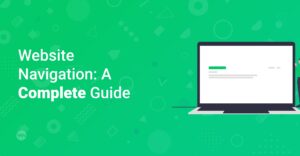Preface
In today’s digital age, having a mobile-friendly website is no longer optional; it’s a necessity. With the majority of internet users browsing on their smartphones and tablets, ensuring your site looks and functions flawlessly on these devices is crucial for attracting and retaining visitors. Neglecting mobile optimization can lead to a poor user experience, higher bounce rates, and ultimately, lost opportunities. Fortunately, with tools like Elementor and WP Astra, creating a responsive and mobile-friendly website has never been easier. This guide will walk you through the steps to optimize your website for mobile devices using these powerful platforms.
Why Mobile-Friendliness Matters
Before diving into the how-to, let’s quickly touch upon why mobile-friendliness is so important:
- Improved User Experience: A mobile-friendly website provides a seamless and enjoyable experience for users on smartphones and tablets.
- SEO Benefits: Google prioritizes mobile-friendly websites in its search rankings, meaning a responsive site can boost your visibility.
- Increased Conversions: A well-optimized mobile site can lead to higher conversion rates, as users can easily navigate and make purchases on their devices.
- Wider Reach: By catering to mobile users, you expand your audience and reach potential customers who may not have access to desktop computers.
Getting Started: Elementor and WP Astra
To get started, you’ll need the following:
- WordPress: A self-hosted WordPress installation.
- WP Astra Theme: A lightweight and highly customizable theme known for its mobile-friendliness. You can download it from the WordPress theme directory.
- Elementor Page Builder: A drag-and-drop page builder that simplifies the process of creating and customizing website layouts. The free version is available in the WordPress plugin directory, but Elementor Pro offers more advanced features and templates.
Info: If you don’t have WordPress set up yet, many hosting providers like HostGator, DreamHost, Bluehost, and GoDaddy offer one-click WordPress installation.
Step-by-Step Guide to Mobile Optimization
1. Install and Activate WP Astra
- Log in to your WordPress dashboard.
- Go to Appearance > Themes > Add New.
- Search for “Astra” and click Install.
- Once installed, click Activate.
2. Install and Activate Elementor
- Go to Plugins > Add New.
- Search for “Elementor” and click Install.
- Once installed, click Activate.
Read this blog post on how to install WordPress plugins.
3. Choose a Mobile-Friendly Starter Template (Optional)
Astra offers a variety of starter templates that are designed to be responsive out of the box. These templates can save you a lot of time and effort. Here’s how to use them:
- Install and activate the “Starter Templates” plugin (if you haven’t already). You will be prompted to install it after installing WP Astra
- Go to Appearance > Astra Options > Starter Templates.
- Choose Elementor as your page builder.
- Browse the available templates and select one that suits your needs.
- Click Import Complete Site to import the entire template, or Import Home Page to import only the homepage.
Read this blog post on how to install Astra Starter Templates.
4. Use Elementor’s Responsive Editing Mode
Elementor’s responsive editing mode allows you to preview and adjust your designs for different devices (desktop, tablet, and mobile). Here’s how to use it:
- Open the page you want to edit with Elementor.
- Click the Responsive Mode icon at the bottom of the Elementor panel (it looks like a computer screen).
- Select the device you want to preview (desktop, tablet, or mobile).
- Make adjustments to your design as needed. Elementor allows you to customize settings differently for each device.
5. Optimize Typography for Mobile
Readability is crucial on mobile devices. Make sure your text is easy to read by adjusting the font size, line height, and letter spacing.
- In Elementor’s responsive mode, select the text element you want to edit.
- Go to the Style tab and adjust the Typography settings for mobile.
- Increase the font size for mobile devices to improve readability.
- Adjust the line height and letter spacing as needed to create a comfortable reading experience.
Consider reading this blog post on how to choose the right fonts for your website.
6. Adjust Column Widths and Order
Columns that look great on desktop may appear cramped on mobile. Use Elementor’s column settings to adjust their widths and order.
- In Elementor’s responsive mode, select the column you want to edit.
- Go to the Layout tab and adjust the Column Width for mobile.
- Use the Reverse Columns option to change the order of columns on mobile devices.
7. Optimize Images for Mobile
Large images can slow down your website’s loading time on mobile devices. Optimize your images by compressing them and using appropriate sizes.
- Use an image optimization plugin like Smush or Imagify to compress your images.
- Resize your images to the appropriate dimensions for mobile devices.
- Use Elementor’s Image Size setting to choose a smaller image size for mobile.
8. Use Mobile-Specific Content
In some cases, you may want to display different content on mobile devices than on desktop. Elementor allows you to show or hide elements based on the device.
- Select the element you want to hide or show.
- Go to the Advanced tab and then to Responsive.
- Use the Visibility settings to hide the element on certain devices.
9. Test Your Website on Different Devices
Once you’ve made your changes, it’s important to test your website on different devices and screen sizes to ensure it looks and functions correctly.
- Use Google’s Mobile-Friendly Test tool to check your website’s mobile-friendliness.
- Use browser developer tools to simulate different devices and screen sizes.
- Test your website on real smartphones and tablets to get a realistic view of the user experience.
10. Optimize your website for SEO
To make sure that your website is easily discoverable you should follow some SEO rules. Consider reading this blog post on how to optimize your website for SEO.
Hint: Don’t forget to clear your website cache after making changes to see the updates on your mobile device.
Advanced Techniques
1. Customize Mobile Navigation
A simple and intuitive navigation menu is essential for mobile users. Consider using a hamburger menu or a mobile-friendly navigation plugin.
- Astra offers a built-in mobile menu option that you can customize in the theme settings.
- Use Elementor’s Menu widget to create a custom mobile menu.
2. Implement Accelerated Mobile Pages (AMP)
AMP is a Google-backed project that aims to improve the loading speed of web pages on mobile devices. Implementing AMP can significantly enhance the user experience.
- Use an AMP plugin like AMP for WordPress to implement AMP on your website. The official AMP website provides detailed information and resources.
3. Use CSS Media Queries
For deeper customization, you can use CSS media queries to apply different styles based on the device’s screen size.
/* Styles for screens smaller than 768px (typical mobile devices) */
@media (max-width: 768px) {
.element {
font-size: 16px;
}
}
You can insert that code either in your style.css file. Read this blog post to learn more: WordPress Style CSS: What It Is and Where to Find It?. Or you use the Customizer to add CSS.
- Go to Appearance > Customize > Additional CSS
- Add custom CSS styles to override default Elementor styles on mobile devices.
4. Leverage Elementor Pro’s Advanced Features
If you’re using Elementor Pro, you can take advantage of its advanced features, such as:
- Popup Builder: Create mobile-friendly popups for lead generation or announcements.
- Theme Builder: Design custom headers and footers specifically for mobile devices.
- Global Styles: Set global styles for typography, colors, and other elements to ensure consistency across your website.
Conclusion
Making your website mobile-friendly is essential for providing a great user experience and improving your search engine rankings. With WP Astra and Elementor, you have the tools you need to create a responsive and optimized website for all devices. By following the steps outlined in this guide, you can ensure that your website looks and functions flawlessly on smartphones and tablets, helping you attract and retain more visitors. So, start optimizing your website today and reap the benefits of a mobile-friendly presence!



